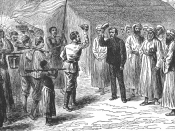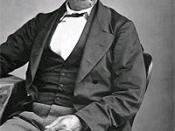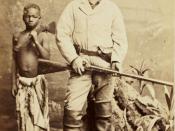Before the age of European imperialism in Africa, the core of the continent was totally unknown to European civilization. Prior to the colonial interests of the major European nations, the age of exploration in Africa opened up many parts of the continent's interior. Numerous expeditions of many explorers made the rapid colonization of Africa possible by showing the European nations what Africa held for them. Although explorers were the key that would open up entirely new issues of rivalry and conflict between the European powers of the late nineteenth and twentieth centuries.
One of the first, and most well-known, explorers to search the interior of Africa was Dr. David Livingstone, a British physician and missionary. He was sent to South Africa as a medical missionary during 1840, and thanks to his expeditions and discoveries many parts of the African map were revealed. Among his many important contributions were his discovery and exploration of the Zambezi river in its entirety, as well as several African lakes.
During a visit to England in 1865, he wrote a story of an Expedition to the Zambezi and its tributaries, revealing the commercial possibilities of the Zambezi region. Dr. Livingstone marked the beginning of the invasion of explorers into Africa's interior.
Sir Richard Burton and John Hanning Speke, both from England, together explored Somaliland during 1854, and located Lake Tanganyika in 1858. Speke who was traveling alone, discovered Lake Victoria, the main source of the Nile, a accomplishment which many explorers, even Dr. David Livingstone, had failed to accomplish. Their explorations contributed to the desire and idea that some parts of Africa could be used for economic purposes.
During 1850 to 1853, Heinrich Barth, from Germany, explored the middle section of the Niger River and Timbuktu. He published a magazine called Travels and Discoveries of...


